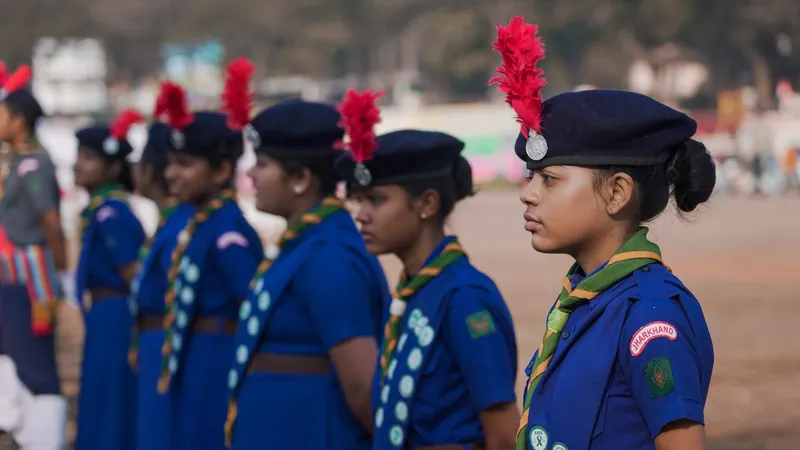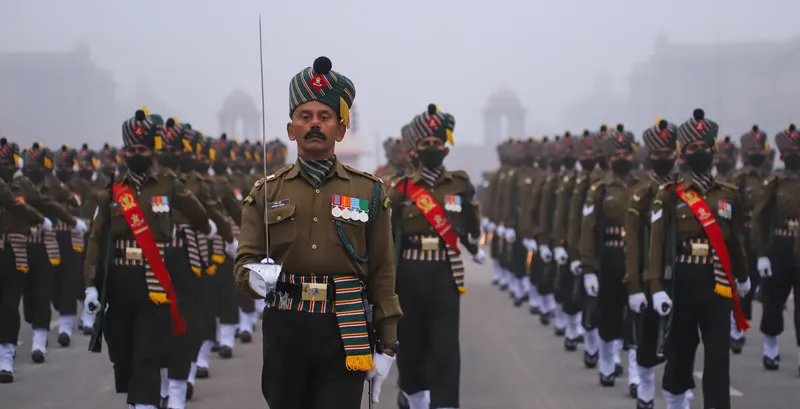Republic Day 2024: Here are some lesser-known facts about the national holiday
On the occasion of 75th Republic Day of India, here are some interesting takes about the historic event that marks the adoption of India’s Constitution.
Republic Day assumes great significance for the citizens of India. Celebrated on January 26 every year, this day isn't a mere national holiday–it is a reminder of the time when the Indian Constitution came into force, declaring the nation a sovereign, secular and democratic republic.
Following India's independence in 1947, a team spearheaded by Dr BR Ambedkar was in charge of drafting the constitution–a symbol of our national identity. Consequently, the Constitution replaced the British colonial Government of India Act (1935) as the country's governing text.
Dr Rajendra Prasad unfurled the Indian tricolour on the first Republic Day in 1950. Ever since then, the President of India has followed this annual practice at the Kartavya Path (earlier called Rajpath) in New Delhi.
Every year, the Republic Day parade is one of the biggest highlights of the nationwide celebration. In 2024, the festivity will revolve around ‘Viksit Bharat’ and ‘Bharat–Loktantra ki Matruka,’ emphasising India’s role as a nurturer of democracy. The Chief Guest for this year will be French President Emmanuel Macron.
That’s not all. The 2024 Republic Day parade will also feature a 95-member marching contingent and a 33-member band contingent from France.
There are several more highlights that will make the 2024 Republic Day parade a unique one. The 'Anant Sutra-The Endless Thread' textile installation will showcase around 1,900 sarees and drapes from the length and breadth of India, and will be mounted on wooden frames along the Kartavya Path.

Glimpse from the Republic Day rehearsal parade at Rajpath | Image: Shutterstock
As India gets ready to celebrate its 75th Republic Day, YS Life looks back at some of the lesser-known facts about the occasion that instils pride in every citizen of the country.
1. It took two years and 11 months for the drafting committee of the Indian Constitution to put together the guidelines. The exercise began after India gained independence from the British. The date, January 26 was chosen to adopt the Constitution for a specific reason—the next fact has it covered.
2. On December 19, 1929, The Indian National Congress passed the historic ‘Purna Swaraj’ resolution at its Lahore session. Following this momentous occasion, there was a public declaration made on January 26, 1930, to celebrate India’s Independence Day. This is after Lord Irwin made a reference to grant the country dominion status in the future but several leaders were dissatisfied with this and demanded complete freedom from the British.
3. The Purna Swaraj resolution was about 750 words and it did not have any legal structure; many from that time termed it a manifesto. The document was a clarion call to launch the Civil Disobedience Movement that was led by the Father of the Nation, Mahatma Gandhi in 1930. This was to protest against the reinforcement of salt tax—the march began from Gandhi’s ashram in Sabarmati to the Gujarati seaside village of Dandi.
4. Every year, there is a chief guest who presides over the Republic Day parade in New Delhi’s Rajpath. The selection process to zero in on the dignitary begins six months in advance. The chief guest is a representation of our ties with another foreign country, signifying the highest level of friendship.
5. The first Republic Day procession was held at Irwin Amphitheatre, now called Major Dhyan Chand Stadium, in 1950 in Delhi. It was a grand celebration with over 100 aircraft and 3,000 Indian military personnel. At that time, the then President of Indonesia Sukarno presided over the event.
6. The Republic Day parade begins with the arrival of the President, after which the cavalier bodyguards of the President salute the Indian tricolour. At this point, the National Anthem is played and the 21 Guns Salute goes on, in honour of the national flag. While it is perceived that shots are fired from 21 canons, it isn’t true. There are only seven canons of the Indian army, known as 25-Ponders that are used for firing in three rounds.
7. Before the Republic Day parade every year, the parade groups cover a staggering 12 kilometres as part of the rehearsals. However, on the main day, the distance is nine kilometres. A jury then evaluates the best marching group based on 200 parameters.

Before the Republic Day parade every year, the parade groups cover a staggering 12 kilometres as part of the rehearsals
8. The Republic Day parade participants have to undergo four levels of security checks. Their arms are also thoroughly examined to ensure they are not loaded with live bullets.
9. Every year, 15 tableau representing different states are selected for the Republic Day parade. According to recent reports, under the new agreement, every state and union territory will receive an opportunity to showcase their culture within three years, for the sake of equitable distribution.
10. The Republic Day celebrations officially end with The Beating Retreat Ceremony that is scheduled at Delhi’s Vijay Chowk on January 29 every year. For the uninitiated, the Beating Retreat is a military ceremony that has its origin in 17th-century England. In India, it was introduced by Major Roberts of the Ceremonial and Welfare Directorate of the Indian Army. The ritual signifies withdrawal from the battlefield; in this case, from the R-Day festivity.
(Feature image by Sharath Ravishankar)
Edited by Megha Reddy







